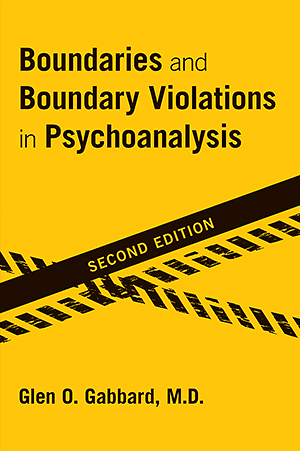Chapter 9.Institutional Involvement
Sections
Excerpt
There was once a deafening silence about the problem of sexual boundary violations in the psychoanalytic profession. Within the American Psychoanalytic Association, a Committee on Psychoanalytic Education study group was formed in May 1996 to study boundary violations in depth. The first publication of that group (Gabbard and Peltz 2001) was titled “Speaking the unspeakable: institutional reactions to boundary violations by training analysts.” The title reflected the need to break the silence about the misconduct of colleagues. In reviewing cases, both those that came from within the American Psychoanalytic Association and those that came from other societies of the International Psychoanalytic Association, the study group often had a reaction of incredulity. Some of the boundary violations by training analysts were so egregious that it was easy to dismiss them as unimaginable when they came before the education committees of institutes or the governing bodies of societies. Denial was pervasive, and there was often a long delay before any action was taken to deal with sexual misconduct by training analysts. When the issue was finally addressed by an administrative body, there was intense ambivalence toward the boundary violator that led to conflicting wishes among those in adjudicating positions regarding the optimal course of action that the institute or society should take. Typically, there was extreme polarization between those who viewed the training analyst as a victim of an unscrupulous patient and those who viewed the training analyst as a psychopathic predator. The result was a paralysis that was made worse by a fear of litigation.
Access content
To read the fulltext, please use one of the options below to sign in or purchase access.- Personal login
- Institutional Login
- Sign in via OpenAthens
- Register for access
-
Please login/register if you wish to pair your device and check access availability.
Not a subscriber?
PsychiatryOnline subscription options offer access to the DSM-5 library, books, journals, CME, and patient resources. This all-in-one virtual library provides psychiatrists and mental health professionals with key resources for diagnosis, treatment, research, and professional development.
Need more help? PsychiatryOnline Customer Service may be reached by emailing [email protected] or by calling 800-368-5777 (in the U.S.) or 703-907-7322 (outside the U.S.).



